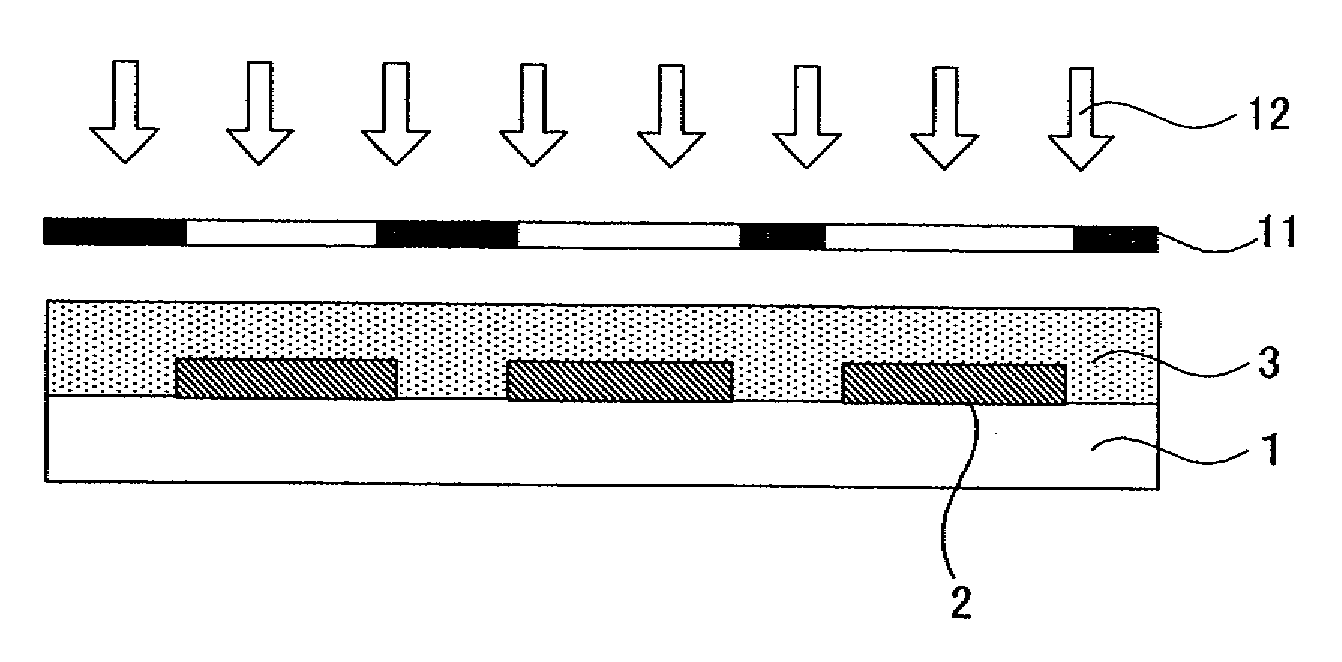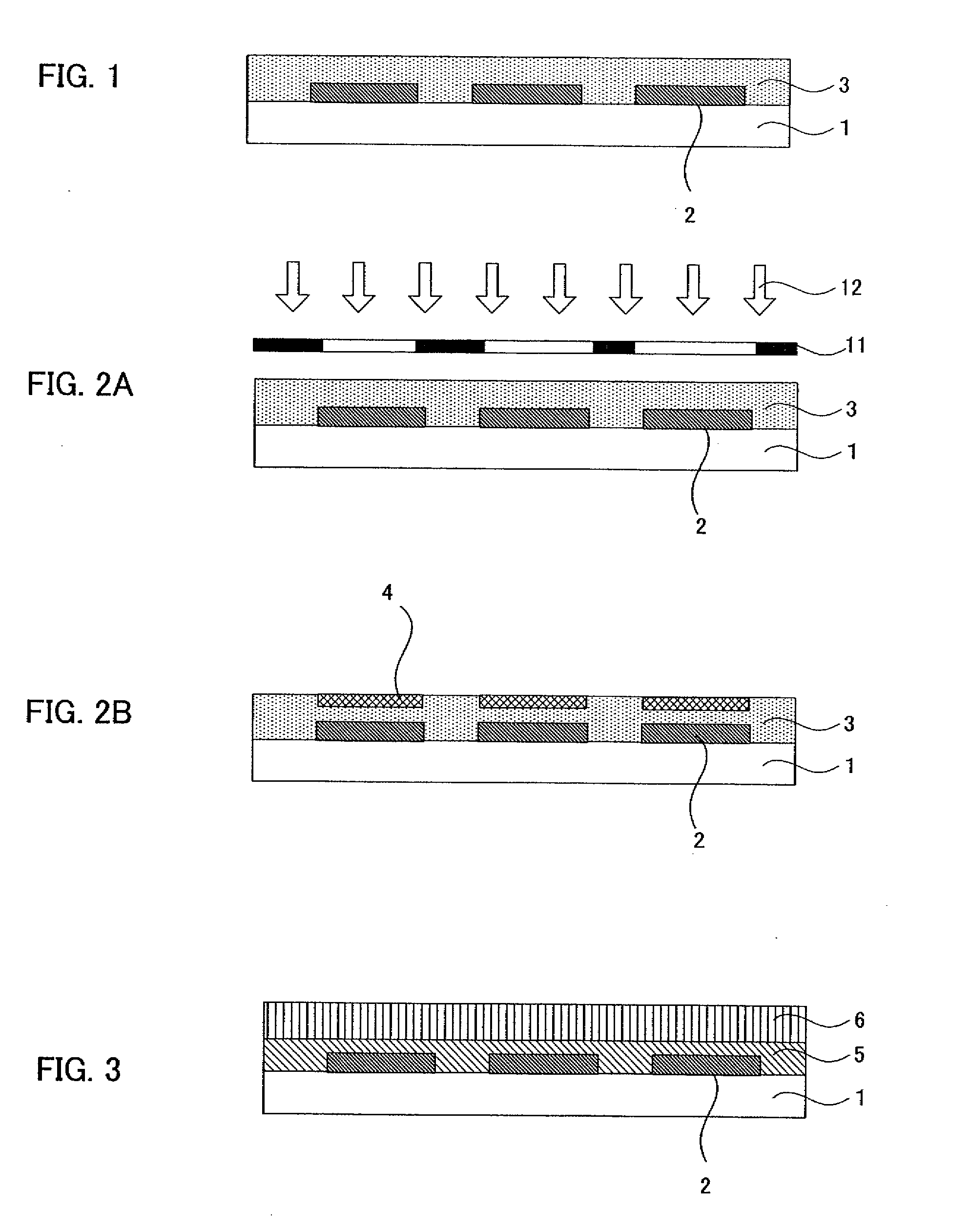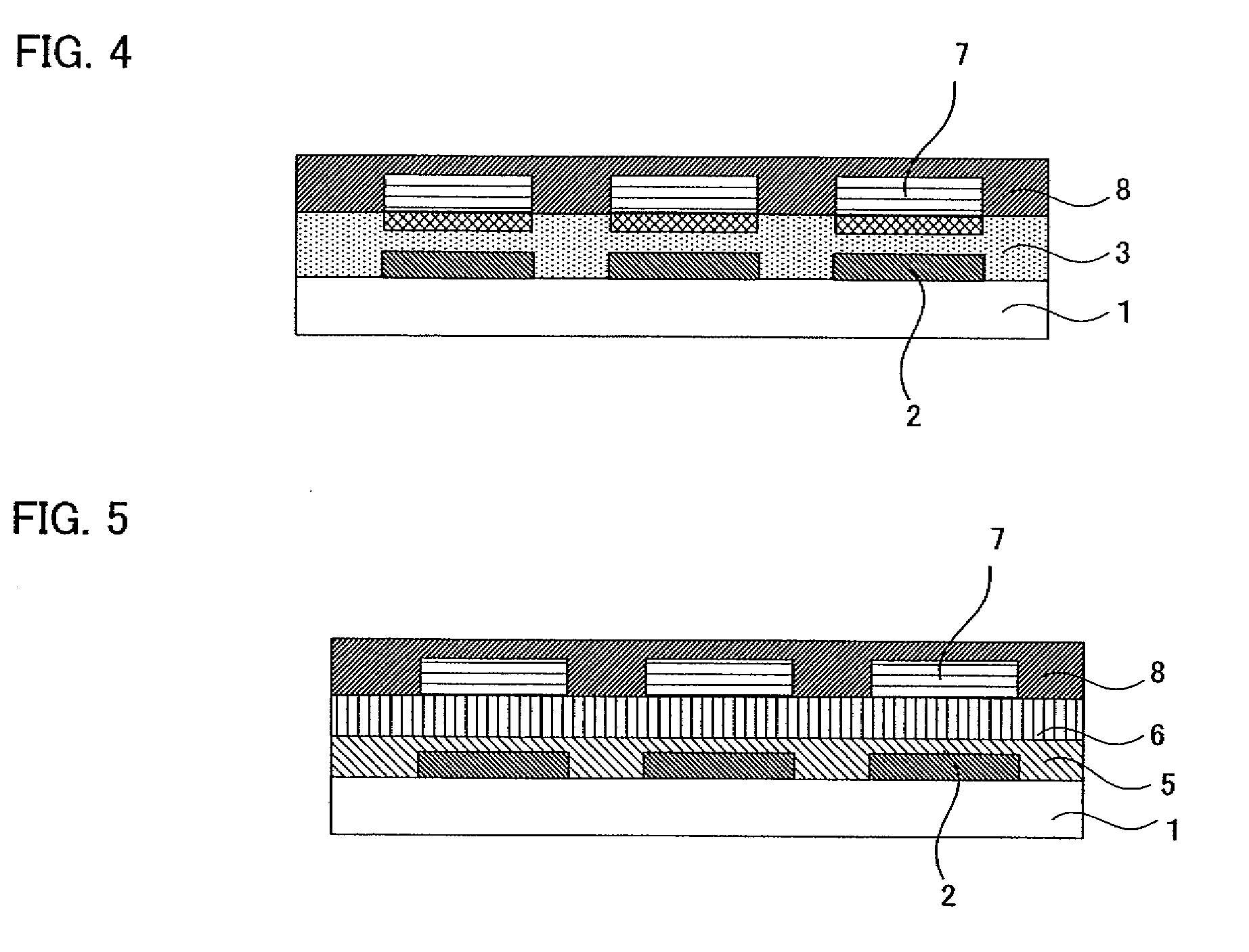Substrate for organic electroluminescent element, and organic electroluminescent element
a technology of organic electroluminescent elements and substrates, which is applied in the direction of instruments, using reradiation, and measuring using electron paramagnetic resonance, etc., can solve the problems of high cost, yield and cost due, and the inability to form highly precise patterns, etc., to achieve convenient and fast production and production, the effect of avoiding the formation of large-scale patterns
- Summary
- Abstract
- Description
- Claims
- Application Information
AI Technical Summary
Benefits of technology
Problems solved by technology
Method used
Image
Examples
first embodiment
1. First Embodiment
[0103]First, a first embodiment of the organic EL element of the present invention will be explained. The organic EL element of the first embodiment provides an organic electroluminescent element comprising an organic electroluminescent layer formed on the photocatalyst containing layer of the substrate for an organic electroluminescent element of the first embodiment, and
[0104]a counter electrode layer formed on the organic electroluminescent layer.
[0105]For example, as shown in FIG. 4, the organic EL element of this embodiment comprises a base material 1, an electrode layer 2 formed in a pattern on the base material 1, a photocatalyst containing layer 3 formed on the electrode layer 2, an organic EL layer 7 formed on the photocatalyst containing layer 3, and a counter electrode layer 8 formed on the organic EL layer.
[0106]According to this embodiment, since the photocatalyst containing layer to have the wettability change by the action of the photocatalyst accom...
second embodiment
2. Second Embodiment
[0141]The second embodiment of the organic EL element of the present invention provides an organic electroluminescent element comprising
an organic electroluminescent layer formed on the wettability changeable layer of the substrate for an organic electroluminescent element of the second embodiment mentioned above, and a counter electrode layer formed on the organic electroluminescent layer.
[0142]For example as shown in FIG. 5, the organic EL element of this embodiment comprises a base material 1, an electrode layer 2 formed in a pattern on the base material 1, a photocatalyst processing layer 5 formed on the electrode layer 2, a wettability changeable layer 6 formed on the photocatalyst processing layer 5, an organic EL layer 7 formed on the wettability changeable layer 6, and a counter electrode layer 8 formed on the organic EL layer 7.
[0143]According to this embodiment, since the wettability changable layer to have the wettability change by the action of the ph...
examples
[0148]Hereinafter, with reference to the examples, the present invention will be explained more specifically.
PUM
 Login to View More
Login to View More Abstract
Description
Claims
Application Information
 Login to View More
Login to View More - R&D
- Intellectual Property
- Life Sciences
- Materials
- Tech Scout
- Unparalleled Data Quality
- Higher Quality Content
- 60% Fewer Hallucinations
Browse by: Latest US Patents, China's latest patents, Technical Efficacy Thesaurus, Application Domain, Technology Topic, Popular Technical Reports.
© 2025 PatSnap. All rights reserved.Legal|Privacy policy|Modern Slavery Act Transparency Statement|Sitemap|About US| Contact US: help@patsnap.com



